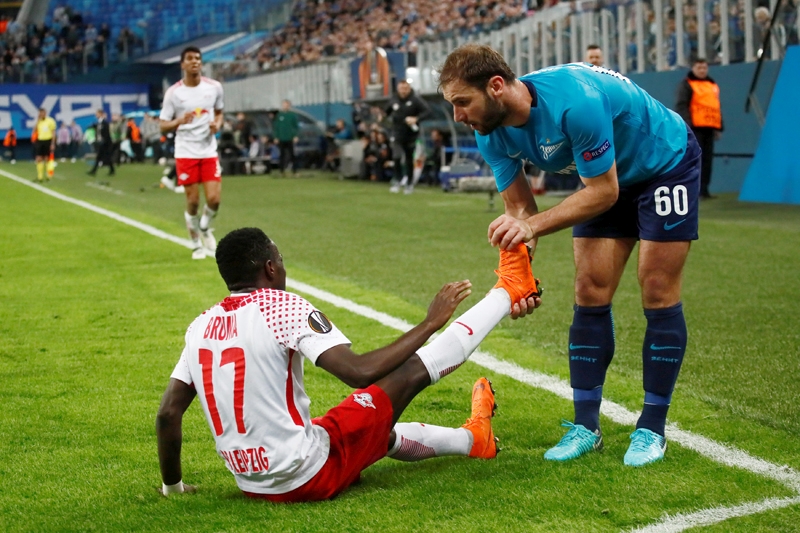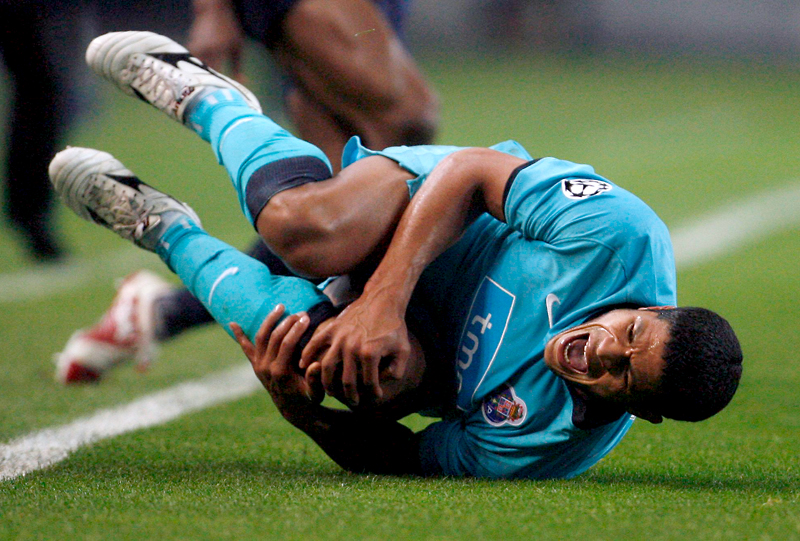You are viewing 1 of your 1 free articles. For unlimited access take a risk-free trial
Pre-running warm ups: stretching the truth

There’s much skepticism about the value of pre-exercise stretching for performance. But new research suggests that integrated properly into a warm up, gains from stretching can be had
When it comes to distance running, it’s intuitive to assume that muscles and joints that can move and extend freely with less effort will enhance performance, and therefore that pre-exercise stretching is a no brainer. However, it turns out that although many runners frequently integrate stretching into their warm-up routines, its overall effectiveness in improving physiological responses, and running performance is still a matter of controversy(1,2).Stretching confusion
The confusion over whether to stretch or not stretch pre exercise is perhaps understandable; the numerous studies conducted to date have included many variables such as the type of stretching used (see box 1), the timing and duration of the stretching and the fitness levels of the subjects studied(3-5). When it comes to stretch duration, recent evidence has highlighted that in static stretching protocols, more may be less effective, and that stretches longer than 60 seconds per muscle–tendon unit can cause performance impairments, while in dynamic stretching, durations totaling less than 220 seconds appear to most effective(6).Box 1: Common modes of stretching
The term stretching covers a number of different techniques for maintaining and developing flexibility. The four most common modalities are listed below:- Dynamic range of motion stretching - often employed in warm ups where the major muscles are moved rhythmically in gentle repetitive motions within their full but normal range of movement.
- Static stretching –The muscles/joints are moved slowly and steadily into the stretch position and held static without bouncing, then released - widely acknowledged as a relatively safe technique for stretching novices and useful for increasing range of movement.
- Ballistic Stretching – an extension of dynamic stretching movement, where the muscle is taken to end of its range of motion then slightly over-stretched by ‘bouncing’. Only well-conditioned athletes, whose sport requires explosive and ballistic movements, are recommended to use this kind of stretching.
- Proprioceptive neuromuscular facilitation (PNF) – a sophisticated technique combining static stretching with added resistance (usually provided by a partner) against which the stretched muscle group works. PNF can improve further flexibility in those already accustomed to static stretching.
It is true that static stretching can improve range of movement in joints, which has been associated with a decrease in injury risk(7). However, not all studies have produced positive results; in particular, static stretching used as an injury prevention strategy for endurance athletes seemed unable to reduce the prevalence of muscular–skeletal injuries(8). In addition, the evidence for performance benefits of static stretching actually leans toward negative effect; a single bout of static stretching during warm-up impaired running performance and running economy (how efficiently the muscles are able to use oxygen)(9,10), and reduced maximal strength and muscle power(11).
Is dynamic better?
Dynamic stretching has been proposed as a superior warm-up stretching mode, but the evidence is still very mixed. Some research found it to improve power, sprint and jump performance, and enhance range of motion, providing a similar, or greater, increase in flexibility than static stretching(12). That said, other studies have found that pre-exercise dynamic stretching produces no gains in either on running economy(13) or on running performance(14). Given the lack of consensus in the literature, it is fair to say that the effects induced by pre-exercise stretching on endurance performance, and the most appropriate type of stretching, remain far from clear. However, new research by a team of Italian scientists just published in the International Journal of Environmental Research and Public Health has tried to provide some much needed clarity as to what (if any) the best warm-up stretching protocol is for endurance athletes – specifically distance runners(15).New research
Eight recreational male runners, with a weekly training volume of about 15 km/week - but who were active but not involved in a systematic endurance training regime - were enrolled in the study. The experimental protocol consisted of the following five sessions: a familiarization session, a cardiopulmonary exercise test (CPET) and three endurance running sessions, which were differentiated by the warm-up stretching content, as follows (the precise stretching protocols for static and dynamic stretching are shown in box 2):- Static stretching
- Dynamic stretching
- No stretching (control condition)
Box 2: Static and dynamic stretching protocols
In the static stretching session (SS), the warm-up consisted of 10 minutes of running at 60–70% VO2max plus five minutes of SS. The SS exercises focused on the following five lower limb muscle groups: quadriceps, hamstrings, hip flexors, hip adductors and gluteals (buttocks). All the static stretches were held at the “point of discomfort” for 30 seconds per leg.- In the dynamic stretching session (DS), the warm-up consisted of 10 minutes of running at 60–70% VO2max plus five minutes of DS. The DS exercises focused on the same lower limb muscle groups and in the same execution order as the SS protocol. Subjects repeated each DS exercise 30 seconds per leg and the maximal range of motion was achieved, by ensuring a secondary pulling motion with each repetition.
Each endurance session included 15 minutes of warm-up followed by five minutes of rest in a standing position. This was then followed by five minutes of a continuous submaximal running (to assess running economy) and a subsequent 'running-until-exhaustion' test (see figure 1). In addition, the assessment of runners’ psycho-physiological stress levels was also recorded via ratings of perceived exertion (RPE).
Figure 1: Experimental design for pre-exercise stretching as part of a warm up

SS = static stretching; DS = dynamic stretching; NS = no stretching (control).
All of the endurance running sessions (SS, DS, NS) were performed on a motorized treadmill, in a laboratory with controlled temperature and humidity, and at the same time of the day to avoid influence of the circadian rhythms. Before starting, subjects were fully familiarized with all the procedures. During endurance sessions, subjects performed 15 min of warm-up including running plus stretching (SS or DS) or not (NS), followed by 5 minutes of rest. At the end of the rest period, they were asked to perform 5 minutes of constant submaximal running at a speed corresponding to 70% maximum uptake (VO2max – moderately hard) to evaluate running economy. At the end of the submaximal running, the subjects continued to run but the speed was increased so that the subjects were working at near 100% of VO2max. From this time point, the time to exhaustion (TTE) was measured with a manual stopwatch.
The findings
Once the runners had completed all three trials and the data was analyzed, the main findings were as follows:- Running economy improved significantly in the static and dynamic stretching warm ups compared to no stretching. In simple terms, this means that the runners who stretched using either mode as part of their warm up were able to utilize oxygen more efficiently in their running muscles – or to put it another way, they were able to maintain the submaximal running pace while using less oxygen. The improvements in economy were significant; in the no-stretch warm up, the runners required an average of 29.7mls/kg/min of oxygen to maintain the pace, while in the static and dynamic stretch warm up, oxygen requirements fell to 24.7 and 23.9mls/kg/min respectively.
- In line with the above, compared to no stretching, the runners’ levels of perceived exertion at the end of the session was significantly reduced (by virtually the same amount) following the dynamic and static stretch warm ups (see figure 2).
- The runners’ times to exhaustion in the intense task at the end of the session was NOT improved following either of the stretch warm up – ie here, there seemed to be no benefits from stretching in the warm up.
Figure 2: Perceived rate of exertion during submaximal running

Incorporating either static or dynamic stretching into the warm up produced a very significant (and similar) reduction in the perceived exertion of the session. NB: each black dot represents an individual runner.
Practical implications
With so much conflicting data about stretching and athletic performance, what should athletes make of these findings? Well, let’s firstly point out that although rigorously designed, the fact that it is just one study, and one that used a small number of participants (eight), means that we can’t take these findings as definitive; more research will be needed to confirm these results. Having said that, there were no downsides from these warm-up stretching protocols, so athletes who are going to undertake some submaximal training could well benefit from trying pre-exercise stretching. In short, it could well make the session feel easier and more enjoyable! Moreover, the regular incorporation of warm up stretching could in theory offer a cumulative effect to athletes who train most days; reduced oxygen consumption in a number of consecutive sessions should lead to a lower overall training load, helping the athlete stay fresher for the harder sessions.Note however that when considering very high-intensity or maximal sessions, the incorporation of stretching into the warm up provided absolutely no benefits in terms of time to exhaustion, which means athletes should not feel the need to add pre-session stretching to a warm up. Indeed, if the session involves maximal strength or explosive type power techniques, stretching may produce a negative effect(11). Finally, athletes (and particularly runners) who are considering trying a static or dynamic stretch addition to their warm up should stick to the protocol outlined above in figure 1 since this was the one that produced the benefits. Adding stretching in a random fashion to a warm up is unlikely to produce the same results!
References
- Appl Physiol Nutr Metab. 2016 Jan; 41(1):1-11
- J. Strength Cond. Res. 2014 doi: 10.1519/JSC.0b013e3182956461
- J. Strength Cond. Res. 2012;26:2432–2437
- J. Sports Med. Phys. Fit. 2006;46:403–411
- J. Strength Cond. Res. 2016;30:2767–2773
- Front Physiol. 2020; 11():630282
- Int J Sports Physiol Perform. 2007 Jun; 2(2):212-6
- Res Sports Med. 2017 Jan-Mar; 25(1):78-90
- J. Strength Cond. Res. 2014 doi: 10.1519/JSC.0b013e3182956461
- J Strength Cond Res. 2010 Sep; 24(9):2274-9
- Front Physiol. 2019; 10():1468
- Sports Med. 2018 Feb; 48(2):299-325
- J Strength Cond Res. 2007 Nov; 21(4):1227-32
- J Strength Cond Res. 2012 Feb; 26(2):335-41
- Int J Environ Res Public Health. 2021 Aug; 18(16): 8386
Related Files
Newsletter Sign Up
Testimonials
Dr. Alexandra Fandetti-Robin, Back & Body Chiropractic
Elspeth Cowell MSCh DpodM SRCh HCPC reg
William Hunter, Nuffield Health
Newsletter Sign Up
Coaches Testimonials
Dr. Alexandra Fandetti-Robin, Back & Body Chiropractic
Elspeth Cowell MSCh DpodM SRCh HCPC reg
William Hunter, Nuffield Health
Keep up with latest sports science research and apply it to maximize performance
Today you have the chance to join a group of athletes, and sports coaches/trainers who all have something special in common...
They use the latest research to improve performance for themselves and their clients - both athletes and sports teams - with help from global specialists in the fields of sports science, sports medicine and sports psychology.
They do this by reading Sports Performance Bulletin, an easy-to-digest but serious-minded journal dedicated to high performance sports. SPB offers a wealth of information and insight into the latest research, in an easily-accessible and understood format, along with a wealth of practical recommendations.
*includes 3 coaching manuals
Get Inspired
All the latest techniques and approaches
Sports Performance Bulletin helps dedicated endurance athletes improve their performance. Sense-checking the latest sports science research, and sourcing evidence and case studies to support findings, Sports Performance Bulletin turns proven insights into easily digestible practical advice. Supporting athletes, coaches and professionals who wish to ensure their guidance and programmes are kept right up to date and based on credible science.











